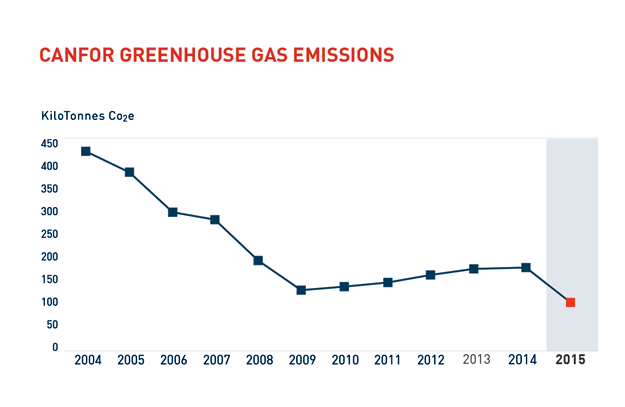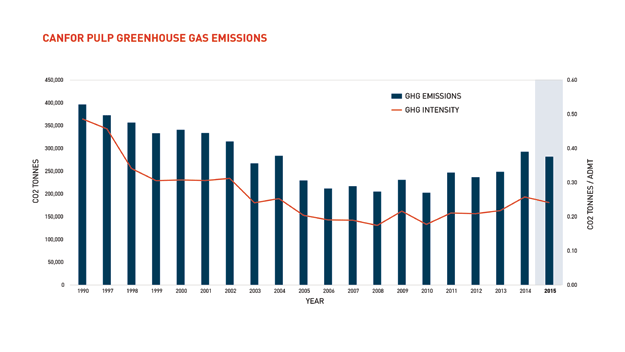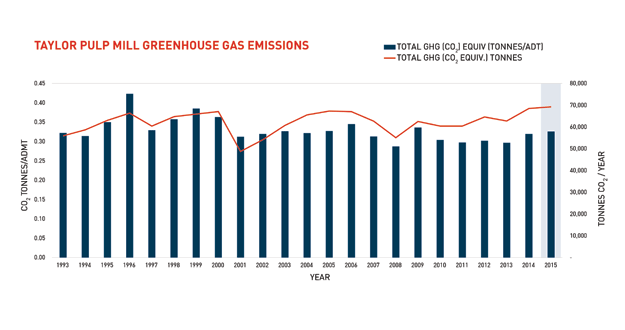Carbon Footprint
Canfor and Canfor Pulp continue to look for ways to combat climate change by improving our manufacturing processes, regenerating forests, reducing our greenhouse gas emissions, and increasing our use of sustainable biomass for power and heating. Using biomass in place of fossil fuels reduces our operating costs, yielding economic as well as environmental benefits.
When our pellet plants at Chetwynd and Fort St. John reach full capacity in 2016, they will have a combined annual production capacity of 175,000 tonnes of wood pellets, and the Chetwynd project will displace 21,000 MWh of electricity consumption every year for 20 years.

Canfor’s greenhouse gas emissions dropped significantly in 2015 as a result of the sale of Taylor Pulp Mill to Canfor Pulp in January 2015. The chart includes the GHG emissions of the recently acquired Hermanville and Anthony Forest Products operations from the time of full ownership. Acquisitions not yet closed have not been included.
The Elko biomass-fired thermal energy system, which started up in October 2014, will eliminate most of the natural gas usage at Elko and generate 10,000 to 12,000 t CO2e greenhouse gas emission reductions. Canfor and Canfor Pulp both sell carbon offset credits into the BC offset market, and Canfor sells credits into the Alberta carbon offset market.

Canfor Pulp was able to reduce the greenhouse gas intensity and total emissions in 2015. The reduction in natural gas consumption at the Northwood mill was partially offset by the increase at the Intercontinental facility. GHG emissions of the Taylor Pulp mill (acquired by Canfor Pulp in January 2015) are reported in separate chart.

The GHG emission intensity at the Taylor pulp mill has been stable. The mill did see a slight increase in GHG emissions in 2015 as the mill's natural gas consumption increased.